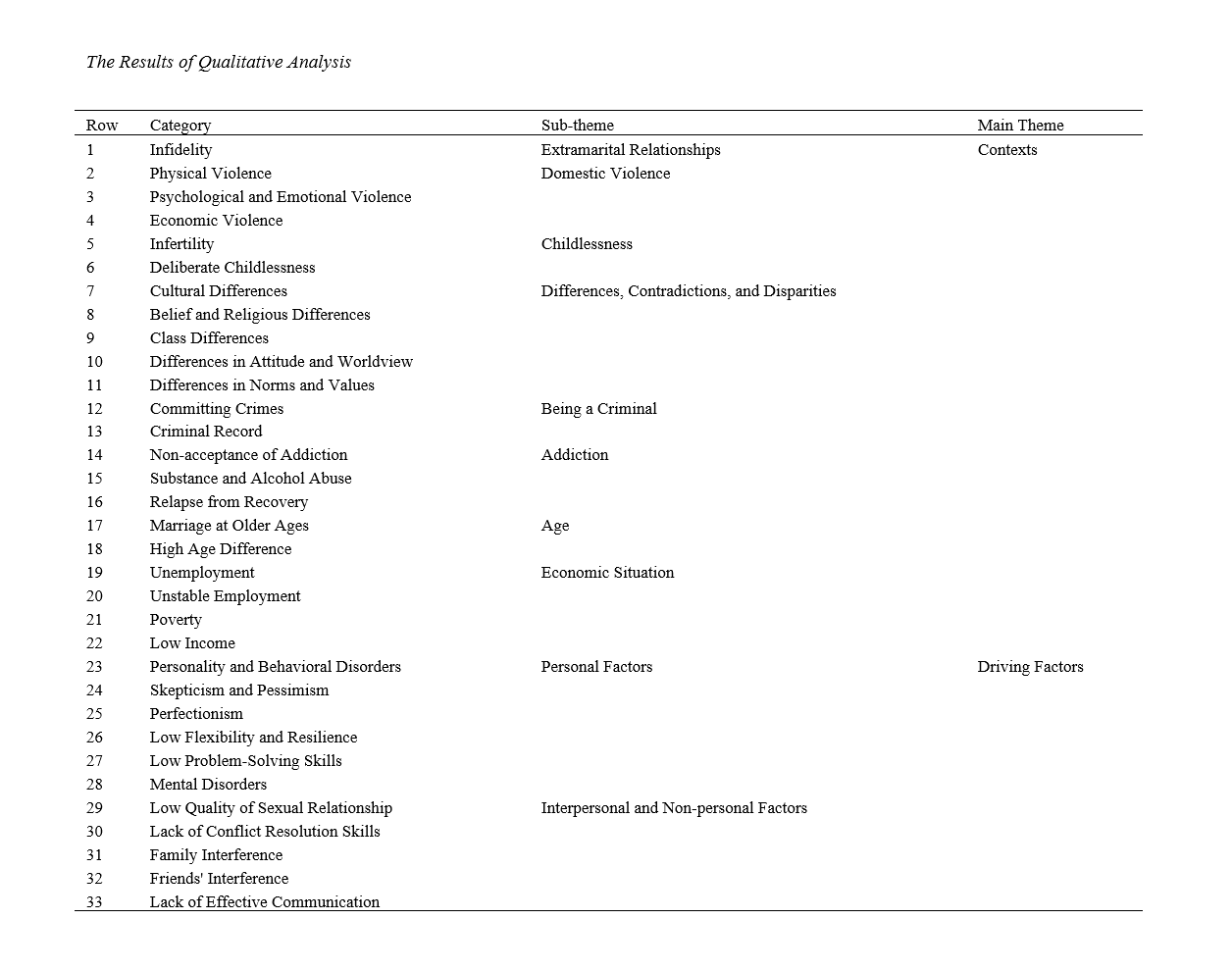Identifying Factors and Contexts Leading Couples to Mutual Divorce
Abstract
Objective: The purpose of the current research was to identify the factors and contexts leading couples to mutual divorce.
Method: This study was qualitative, utilizing descriptive phenomenology. The population consisted of couples seeking mutual divorce at counseling centers in Tehran. Among these, interviews with couples were conducted through purposive sampling until theoretical saturation was achieved. Qualitative data were collected using descriptive phenomenology and semi-structured interviews. Then, data analysis was performed using content analysis.
Findings: The results of the content analysis of the data collected through in-depth semi-structured interviews showed that the contexts leading to mutual divorce could be categorized into eight classes: 1) extramarital relationships, 2) domestic violence, 3) childlessness, 4) conflicts, contradictions, and differences, 5) criminality, 6) addiction, 7) age, and 8) economic status.
Conclusion: The results indicated that the factors leading to mutual divorce could be classified into two categories: personal factors and interpersonal or non-personal factors.
Downloads

Downloads
Additional Files
Published
Issue
Section
License
Copyright (c) 2024 Farzaneh Mardani (Author); Shokouh Navabinejad (Corresponding Author); Emad Yousefi (Author)

This work is licensed under a Creative Commons Attribution-NonCommercial 4.0 International License.




















